When fall turns into winter, you don’t have to put your fishing rods away. You can simply trade your fly fishing rod for your ice fishing rod and auger. If you’re keen to try ice fishing this winter, don’t venture into the great outdoors unprepared. Here are 5 tips to help you gear yourself up for your winter fishing adventures.
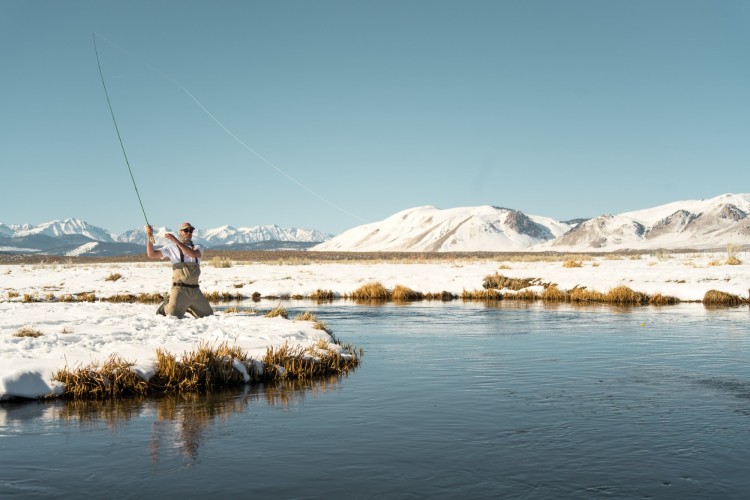
You can trade your fly fishing rod for your ice fishing rod and auger in winter. Photo by Jeremy Bishop on Unsplash
1. Layer Your Clothing
If there’s one tip I’ve learned from fishing in winter, it’s that you need to layer up and wear the right type of clothing. This will help keep you dry and warm while you’re waiting for the fish to bite.
Always start your base layer with long thermal underwear and socks. For the mid-layer, I’d recommend using material made from Merino wool, fleece, or Polartec as they offer good insulation. The outer layer should be waterproof and windproof and protect you from the elements.
Layering helps insulate the heat between each layer, and your base layer will help draw moisture away from your skin. You should avoid clothing made from cotton because if it gets wet, you’ll be cold for the rest of the day.
To make sure that you’re comfortable and warm all day, wear cold-weather shoes and pack a warm hat and gloves.
Read More:
Snowshoeing Dress Code – What Clothing To Wear
Covering The Extremities: Prepare For The Snowshoe Season
2. Ice Fishing Gear Essentials
When it comes to packing my essential ice fishing gear, I always include my snowshoes! I like a challenge, and some of the best fishing spots require you to walk a distance in the snow that could be waist-deep.
Using snowshoes can make the trip easier when you’re hauling a sled packed with your gear. I usually take my snowshoes that incorporate crampons (like these), as I can use these to walk over mixed ice and snow conditions. It’s also easier to walk up winter trails where slopes can exceed 38 degrees, as they’ll provide better traction. Just be cautious and prepared if heading into avalanche conditions.
For example, I’ll make use of my snowshoes when I go ice fishing at Twin Lakes, off Colorado 82, and Jefferson Lake, north of Fairplay. To reach your fishing spot in winter with these two lakes, you’d need to wear snowshoes.
Just remember this old piece of advice when walking over ice, “Thick and blue, tried and true. Thin and crispy, way too risky”.
I also make sure to always pack the following essential ice fishing gear:
- Ice fishing rod and reel
- Fish Finder
- Ice auger (both handheld and gas)
- Ice fishing tip-ups
- Tape measure
- Ice fishing shelter
- Heat source
- Retractable ice pick
- Live bait container
Read More: Why To Use Snowshoes On Your Next Mountaineering Adventure
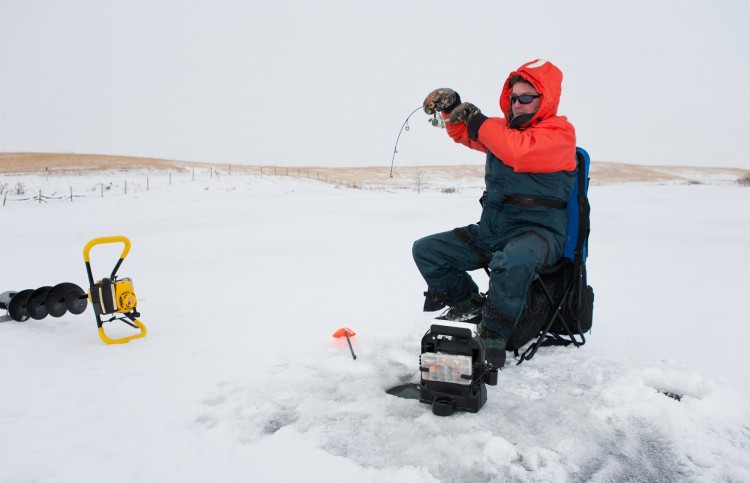
One tip is to make sure you have the essentials (including your snowshoes) when winter fishing. Photo: Scott Litt via Shutterstock
3. Protect Your Eyes
Even if you’re out in overcast weather, make sure to protect your eyes from UV rays by wearing a quality pair of sunglasses. The last thing you want to experience after a day of fishing is a sunburned cornea, snow blindness, or dry eye.
A pair of good quality sunglasses will not only protect your eyes from UV rays but will also help you see better in low-light conditions. Without the glare, you’ll be able to see potential hazards while you’re on the ice.
Wearing sunglasses will also prevent headaches that can be caused by eye strain or fatigue. You’ll also see the fish better with sunglasses that have vision-enhancing lens tints.
Read More: Reviews of Sunglasses
4. Tune Your Reels
Before you drop your line, make sure that your reels are in perfect working condition. While some open-water reels could be used for ice fishing, it would be best to go with an in-line reel, baitcasting reel, or traditional spinning reel.
I’ve found that using an in-line reel deploys the bait to the depths that fish are at while minimizing the fish-repelling bait spin when the lure is in the water. It’s also easier to retrieve the line, and I don’t have to worry about it twisting as it’s deposited onto the spool.
You may also want to consider the line you’ve selected to use. Fluorocarbon will absorb less water than monofilament or braided lines. This makes it less likely to become frozen or to stiffen. Fluorocarbon will also sink faster than monofilament, which will help get the bait to the fish and get them biting.
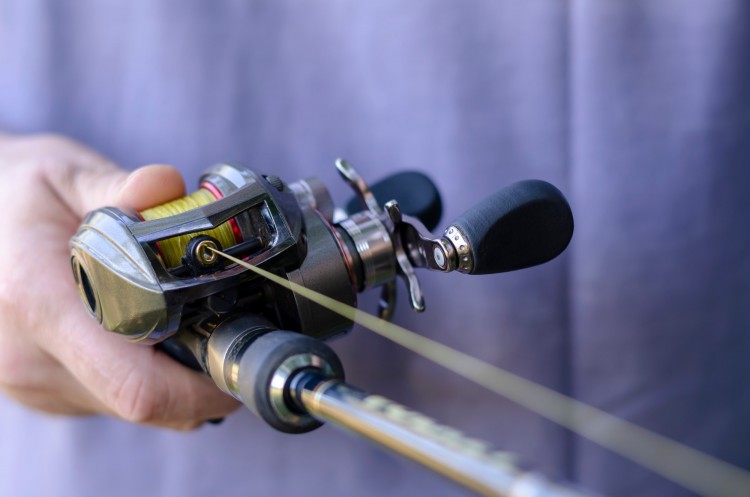
A baitcasting reel is one option you can use for winter fishing. Photo: Dmitriev Mikhail via Shutterstock
5. Choose Your Bait Wisely
Even if it’s the middle of winter, you can still catch the same fish as you would in summer! You can use plastic ice fishing lures, but it would mean that you’d need to jig the line, even letting the bait hit the bottom to raise some silt.
The best bait to use when ice fishing is live bait like wigglers, wax worms, or maggots. If you want to attract larger fish, you could try using minnows, spawn bags, or smelt.
Go Fish
Ice fishing in winter is a fun experience and definitely worth doing, even if you’re a self-proclaimed summer fisherman. To have the best experience, though, you need to gear up properly for your own safety.
Layer up, protect yourself, and don’t forget your snowshoes!
What recommendations and tips do you have for winter fishing? What snowshoes are your favorite for your winter fishing adventures?
Read Next:
5 Things To Do With Snowshoes That Aren’t (Exactly) Snowshoeing
Fairy Lake, Lizard Lake, and Cowichan Lake: Fishing & Hiking On Vancouver Island
A Diary of Winter Time In Haines, Alaska
Winter, Spring, Summer, Or Fall: Sylvania Offers It All

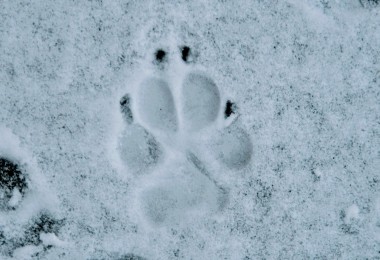

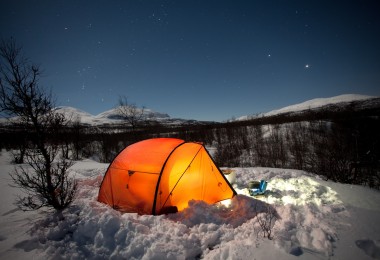


Leave a Comment